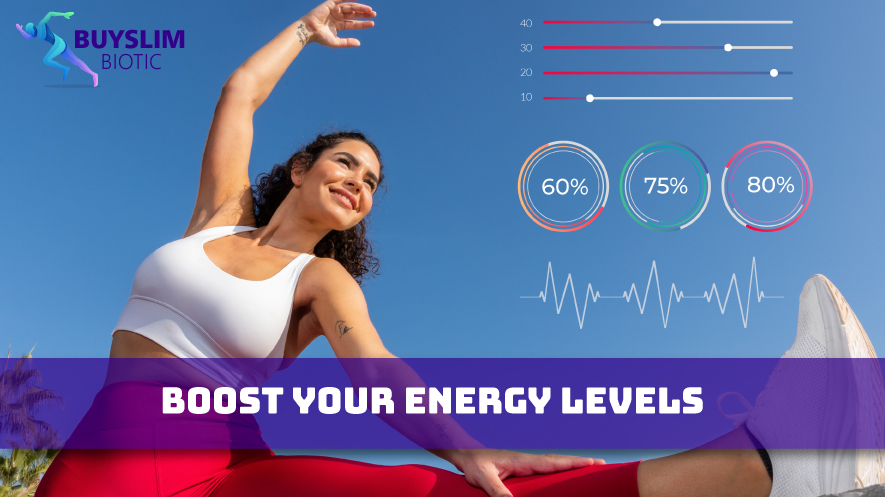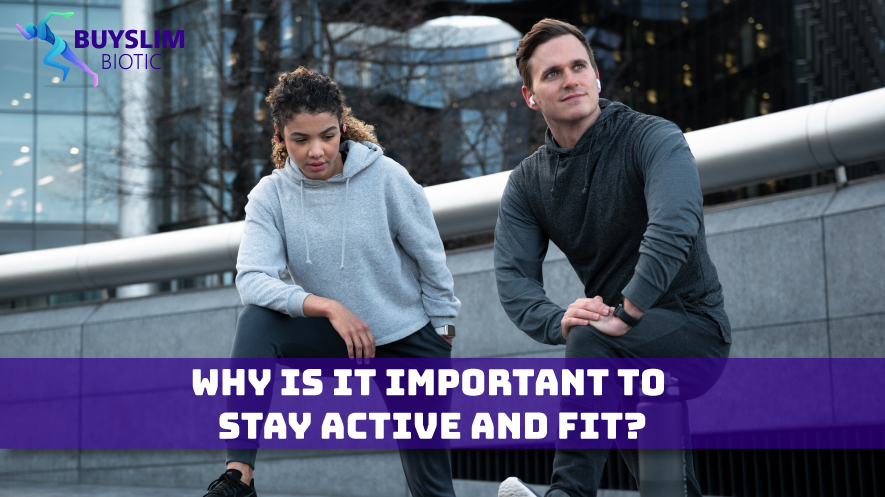Stay vibrant and healthy with “Active and Fit“! Our program offers access to over 17,000 fitness centers and studios, plus 8,100+ on-demand workout videos. Whether it’s at the gym or from the comfort of your home, we provide the tools and support to keep you motivated on your fitness journey.
Incorporating physical activity into your everyday life is a great way to get fit and stay healthy. Even walking to work or taking the stairs rather than riding the elevator can add up.
Talk to your doctor before you start exercising, and make sure to vary your activities to avoid getting bored. Exercise can also be social, so try to get together with friends for fitness-related activities.
1. Boost Your Energy Levels
Fitness levels are important to your overall health, reducing your risk for heart disease and diabetes, improving sleep quality, lowering blood pressure and boosting mental clarity. It can also help you cope with stress, keep your joints and bones strong, and improve your ability to move around and do everyday tasks such as reaching items on high shelves or tying your shoes.
But getting more exercise can seem like a huge undertaking in our busy lives. It can be difficult to find time for workouts, especially when you’re not used to exercising regularly or if you’re recovering from injuries. And finding childcare for your kids while you work out can be a major challenge. But once you make it a priority, and focus on finding small ways to get active, you can easily build exercise into even the busiest schedules.
When you exercise, your body burns calories and increases the oxygen flow to your muscles, making you feel more energetic. The trick is to not overdo it, as over-exercising can actually make you feel tired. Try to squeeze in at least 30 minutes of moderate activity, such as brisk walking, most days of the week.
Other factors that can affect your energy levels include drinking enough water, eating a well-balanced diet, sleeping enough and staying social. If you’re struggling with fatigue, talk to your doctor. They can help determine whether it’s a symptom of a more serious illness or condition, such as thyroid problems or depression. If so, they can recommend treatment options.

2. Lower Your Risk of Disease
If you are able to stay active, your chance of having many different chronic diseases drops significantly. These include cardiovascular disease, diabetes, osteoporosis and some cancers. It also lowers your risk of developing a stroke and high blood pressure, as well as helping to prevent weight gain and obesity. Being fit reduces the risk of falls and can help you sleep better at night, too. It also improves your chances of living a longer life.
It doesn’t matter what age you are or how much you can or cannot do; everyone can enjoy the health benefits of exercise and physical activity. You can walk around the block with a friend, go to the gym or try doing high-intensity interval training for short periods of time throughout the day.
People who are sedentary have a much higher death rate than those who spend most of their time physically active. This is because being sedentary increases your chance of experiencing heart disease, type 2 diabetes and cancer. Regular exercise, even if it’s just a few minutes of moderate intensity activity every day, can reduce your chances of dying early by up to 23%, according to research published in the journal Circulation.
Getting enough physical activity also improves your immune system, lung and heart health and reduces inflammation levels, blood pressure, cholesterol and body fat. It can even help with mental health, mood and cognitive function.
It is important to start slowly, talk to your doctor and avoid overdoing it. However, if you’re a non-active person who wants to become more active, it can be difficult to know where to begin. To get the most benefits, try to incorporate activities that involve all major muscle groups and include moderate to vigorous intensity aerobic exercises as well as activities that strengthen bone and muscle.
3. Improve Your Mental Health
It’s been long-established that exercise improves your physical health by lowering your risk of certain diseases, chronic conditions and mental illness. But recent research shows that staying active is also good for your mental health, as well.
Researchers found that when people accumulated 150 to 300 minutes of moderate to vigorous activity per week, they had a lower risk of experiencing depression and anxiety. They also had better sleep and a higher quality of life overall.
However, for many of us, a lack of motivation, fear of injury or the time commitment can keep people from being physically active. In addition, seasonal changes, shorter days and the holidays can cause disruptions in regular fitness routines and make it easy to fall out of a healthy habit.
To help you stay motivated, think about why physical activity is important to you and set attainable goals. It’s also helpful to find a support system to hold you accountable and offer encouragement. For example, you could join a gym or community fitness class, make a commitment to a walking buddy, or schedule a weekly meeting with your personal trainer at Circuit 31 Fitness to discuss your progress and goals.
Finding ways to be more physically active can be fun and exciting. Get creative and sneak in activities throughout the day by biking to work instead of driving, taking the stairs instead of elevators, parking at the back of the lot and going for a walk around the office during your lunch break, jogging with your kids on the soccer field or playing tag in the backyard, or making a hike a part of your weekend family outings.
4. Help You Sleep Better
Exercise has a wide range of benefits, from improving mental and physical health to keeping you focused and energized during the day. It can also help you sleep better at night. In fact, research shows that people who regularly exercise get more restful and deeper sleep. It’s important to include daily exercise in your routine, whether you prefer working out at the gym or a more low-key activity like walking or swimming.
When you work out, your body releases hormones that can promote better sleep. This includes melatonin, which helps regulate your circadian rhythm and your sleep-wake cycle. Moreover, exercise may increase the length of slow-wave sleep, the most restorative part of your sleep. It can even reduce daytime sleepiness, which is associated with conditions such as obesity, depression, and diabetes.
There’s no right or wrong time to exercise. Some experts recommend working out in the morning, so you can enjoy the added benefit of natural sunlight to help regulate your circadian rhythm. However, if you prefer to work out later in the day, it’s fine, too. Just make sure you allow a few hours between workouts and bedtime.
In addition, a recent study found that when you don’t get enough sleep, it makes your workouts feel harder. While it doesn’t negatively affect your cardiovascular and respiratory systems or aerobic and anaerobic performance capability, it does make you fatigue faster, so it’s more difficult to push yourself as hard during your workouts. Getting sufficient sleep can also improve your recovery time after your workouts, so it’s an important part of your fitness regimen. So, which is more important: your sleep or your workouts? Both are vital for good health!
5. Help You Stay Active
Regardless of age, ability or physical shape, everyone can benefit from regular exercise and healthy habits. Fitness boosts energy, helps manage weight and lowers blood pressure. It can also help prevent some long-term (chronic) conditions such as heart disease, type 2 diabetes, and cancer, and reduce the risk of falls, stress, clinical depression, dementia, and Alzheimer’s disease.
In order to get the most health benefits from physical activity, adults should aim for at least 150 minutes of moderate intensity (activity you can talk while doing) on most or all days of the week. It is important to incorporate muscle-strengthening activities on two or more days of the week as well. This can be achieved through daily activities such as gardening, housework, and walking, or through leisure activities such as swimming, biking, golfing, tennis, hiking, and taking a dance class.
Countries and communities need to work together to provide everyone with opportunities to be active, and to support people in meeting their physical activity goals. This requires a wide range of sectors and disciplines to come together, and it may require different approaches depending on the cultural context of each country.
Making physical activity and fitness a part of your everyday routine can be easy once you get into the habit. For example, you can walk or bike to work instead of driving, take the stairs rather than the elevator, and take part in a local walk-a-thon. Joining a fitness class or group can also be a good way to increase your activity level, as it provides a more consistent approach to physical activity and a sense of social support. You can find fitness classes through your community centres, local gyms, schools and churches.




